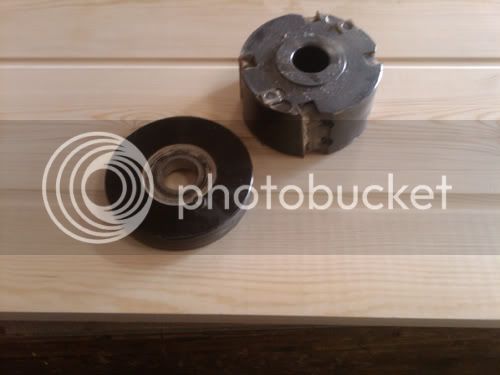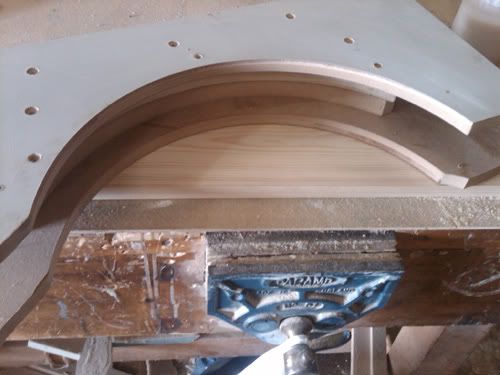Johnny, in my experience, the frame rails do spring back a little, but once they're jointed and the frame is glued to the carcase, they're going nowhere!
Brad, this is my process for a curved beaded frame....
Laminate the stock for the frames.
Cut the frame components to length, starting with the verticals. Mark out and cut the joints as usual (using mortar groove cutter and jig - I believe you do the same, unless you've changed to router table mode).
Clamp (I use a Kreg face frame clamp) the rails to the carcase and mark off (using a spacer the same depth as the 'mortise' in your joint - in my case 7.5mm) from the internal carcase side. This will give you your angle for the first cut.
Make this cut however you feel comfortable.
Cut the 45 degree joint (I use a modified donkeys ear shooting board and block plane)
Fit the joint and mark the other side.
Repeat for the other rail.
Up until this point, all the frame members are un-moulded.
Dry fit them to the carcase and blend the frame in (you'll probably have to take the edge off the verticals.
Now disassemble the frame, bead on the router table, reassamble and glue to the carcase.
I can probably joint and fit one frame in the time it took to explain this.
I hope that makes sense.
It probably doesn't though....... :wink:
EDITED FOR SPELLING






